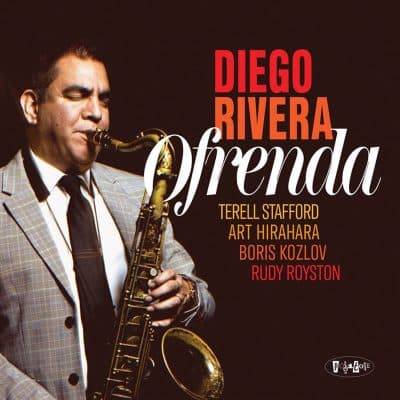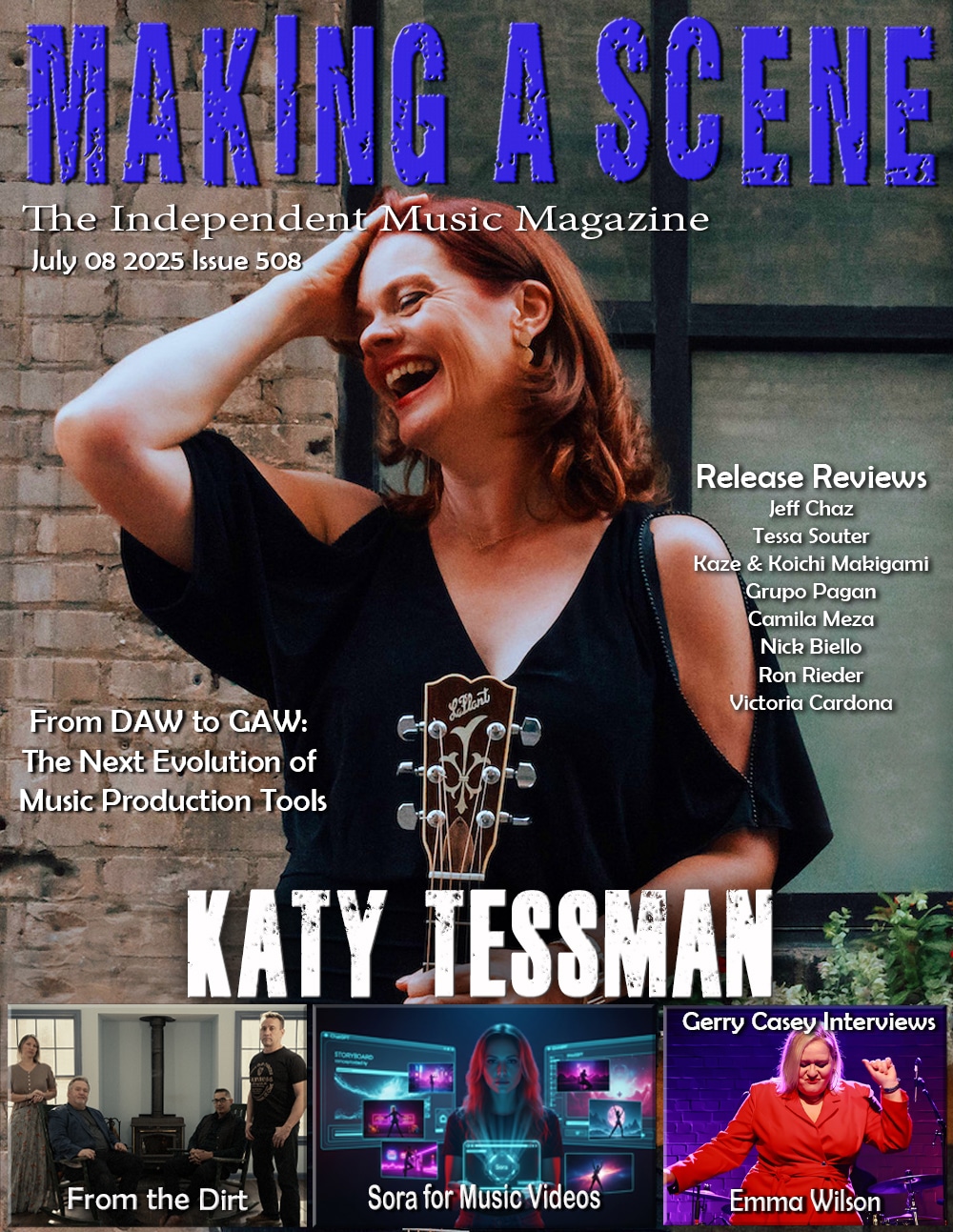Diego Rivera Ofrenda
 Diego Rivera
Diego Rivera
Ofrenda
Posi-Tone
Ofrenda is the seventh album and the fifth for the Posi-Tone label, three of which we have covered on these pages for saxophonist and composer Diego Rivera. (This writer has covered all four). As such, we’ll bypass most of the biographical information except to say the Michigan-born, former educator at Michigan State University has moved to Austin, TX where he is currently the Director of Jazz Studies at The University of Texas at Austin’s Butler School of Music and also serves as Associate Professor of Jazz Studies & Jazz Saxophone. In fact as Rivera was moving, his packed car in the driveway no less, he received news that he had received an offer from Chamber Music America to compose a work through the New Jazz Works Grant. The key word in that sentence is ‘offer’ as it had Rivera thinking about the Mexican tradition La Ofrenda and the Mexican holiday Dia De Los Muertos, when family members remember lost loved ones and bring items such as photographs, bracelets, flowers and such to the makeshift altar in the home. Ofrenda, then is his ten movement suite on this theme. Rivera is joined by the stalwart Posi-Tone rhythm section of pianist Art Hirahara, bassist Boris Kozlov, and drummer Rudy Royston. Joining also is special guest, the acclaimed trumpeter, Terell Stafford.
The march-like, processional “Volver” is what is described above, returning remembrances to loved one by placing them on the plain white cloth stretched across the table. Each solo (Rivera, Stafford, Hirahara) played to this hard bop straight-eight groove is to represent a special item. “Fotografias,” rather obviously ‘photographs,’ is a piece meant to represent that process of deliberating over each one to place on the ‘altar.’Rivera begins alone as if focusing on his choices. Stafford follows with a emotional statement and then the band joins in, the piece gathers momentum but decelerates to a definitive close. “Pan De Muerto” is a special bread made for the holiday to give sustenance to those journeying from the gravesite to the ofrenda. The solos are brisk and vibrant, wrapped around a New Orleans second line parade feel, the origins of which lie partly in the Mexican Danzon. Stafford soars stratospherically here and then he and Rivera engage with Royston on the eights, yielding the spotlight to a terrific turn from the drummer. The gorgeous slow waltz “Cempasuchil” is about the Aztec marigold oft referred to as “Flower of the Dead.” It features an expressive bass solo from Kozlov and a repetitive chord from Hirahara as the two horns blow a respectful, rather bluesy melody both in unison and separately.
“Cosas” is a fast tempo piece that references personal obsessions that define who the person is. The fleet fingered Rivera and Hirahara along with the fiery Stafford blast through with abandon. Mexican strains become more apparent in “Papel Picado” which refers to perforated tissue paper that adorns an ofrenda at the altar top. Rivera’s soprano and Stafford’s perky trumpet are symbolically punching holes in the paper while Kovlov steps forward melodically on his double bass and the floatigf, lyrical melody gradually fades, signifying that the banners have been hung. “La Cavalera” is for skulls used in the ceremony. Again the quintet flies through this one, with Royston getting another energetic spot, as the two horns blow repetitively to indicate the lack of difference in skulls and perhaps the use of so many in the designs surrounding the ofrenda.
“Cruz” (Cross) and “Velas” (Candles) are the most ostensibly religious pieces, the former begun by Hirahara’s church bell like chords. The music is aptly reverential, accenting by Kozlov’s pulsating bass. “Velas” carries on the elegaic spirit of loss, that builds ona bolero-style bass figure, with the two horns delivering a melody that translates to hope and a peaceful transition to heavenly realms. “Esquelto” is ‘skeleton,’ which represents the soul of a person who has passed on. Simply put, this is a celebration of life, as exemplified by the upbeat, energetic music influenced by “Son Jarocho.” a type of traditional music from Veracruz.
Just as Rivera did on his pervious Posi-Tone releases, especially “Mestizo,” he masterfully marries jazz to the cultural traditions of his Chicano heritage.
– Jim Hynes
Buy Us a Cup of Coffee!
Join the movement in supporting Making a Scene, the premier independent resource for both emerging musicians and the dedicated fans who champion them.
We showcase this vibrant community that celebrates the raw talent and creative spirit driving the music industry forward. From insightful articles and in-depth interviews to exclusive content and insider tips, Making a Scene empowers artists to thrive and fans to discover their next favorite sound.
Together, let’s amplify the voices of independent musicians and forge unforgettable connections through the power of music
Make a one-time donation
Make a monthly donation
Make a yearly donation
Buy us a cup of Coffee!
Or enter a custom amount
Your contribution is appreciated.
Your contribution is appreciated.
Your contribution is appreciated.
DonateDonate monthlyDonate yearlyYou can donate directly through Paypal!
Subscribe to Our Newsletter
Order the New Book From Making a Scene
Breaking Chains – Navigating the Decentralized Music Industry
Breaking Chains is a groundbreaking guide for independent musicians ready to take control of their careers in the rapidly evolving world of decentralized music. From blockchain-powered royalties to NFTs, DAOs, and smart contracts, this book breaks down complex Web3 concepts into practical strategies that help artists earn more, connect directly with fans, and retain creative freedom. With real-world examples, platform recommendations, and step-by-step guidance, it empowers musicians to bypass traditional gatekeepers and build sustainable careers on their own terms.
More than just a tech manual, Breaking Chains explores the bigger picture—how decentralization can rebuild the music industry’s middle class, strengthen local economies, and transform fans into stakeholders in an artist’s journey. Whether you’re an emerging musician, a veteran indie artist, or a curious fan of the next music revolution, this book is your roadmap to the future of fair, transparent, and community-driven music.
Get your Limited Edition Signed and Numbered (Only 50 copies Available) Free Shipping Included
Discover more from Making A Scene!
Subscribe to get the latest posts sent to your email.










